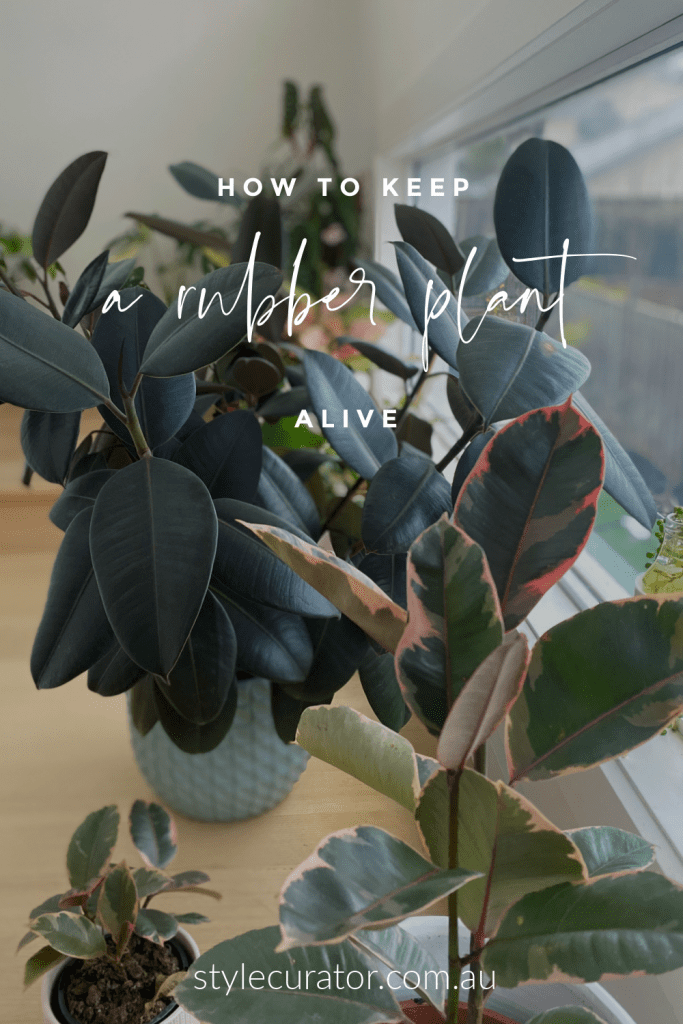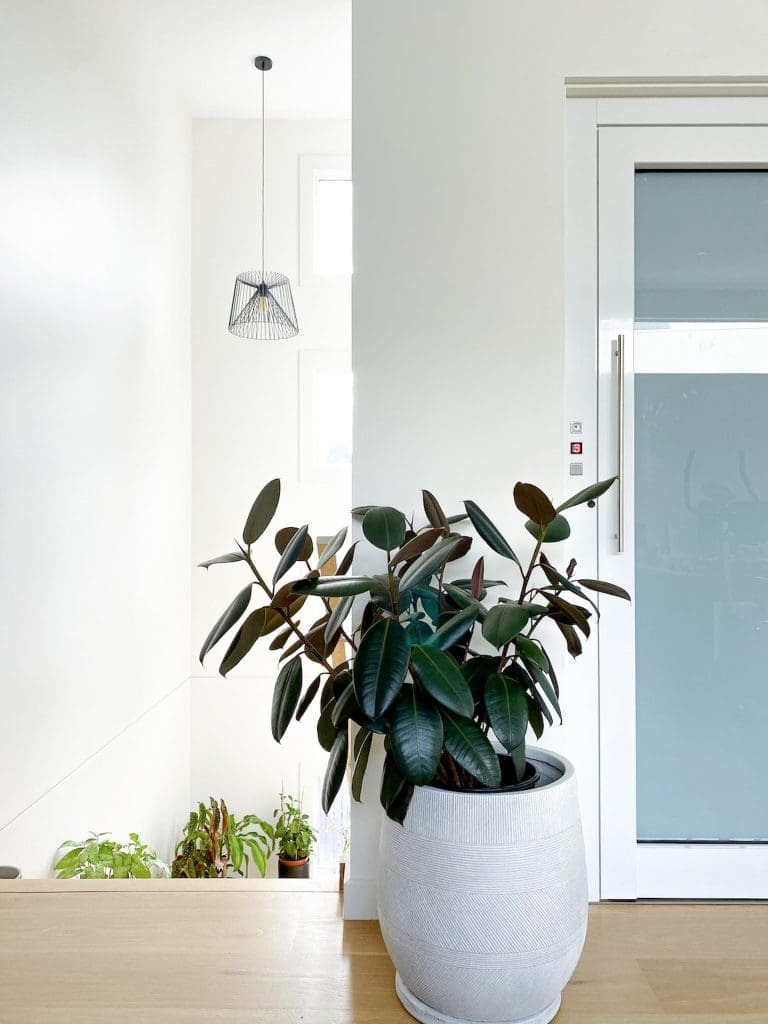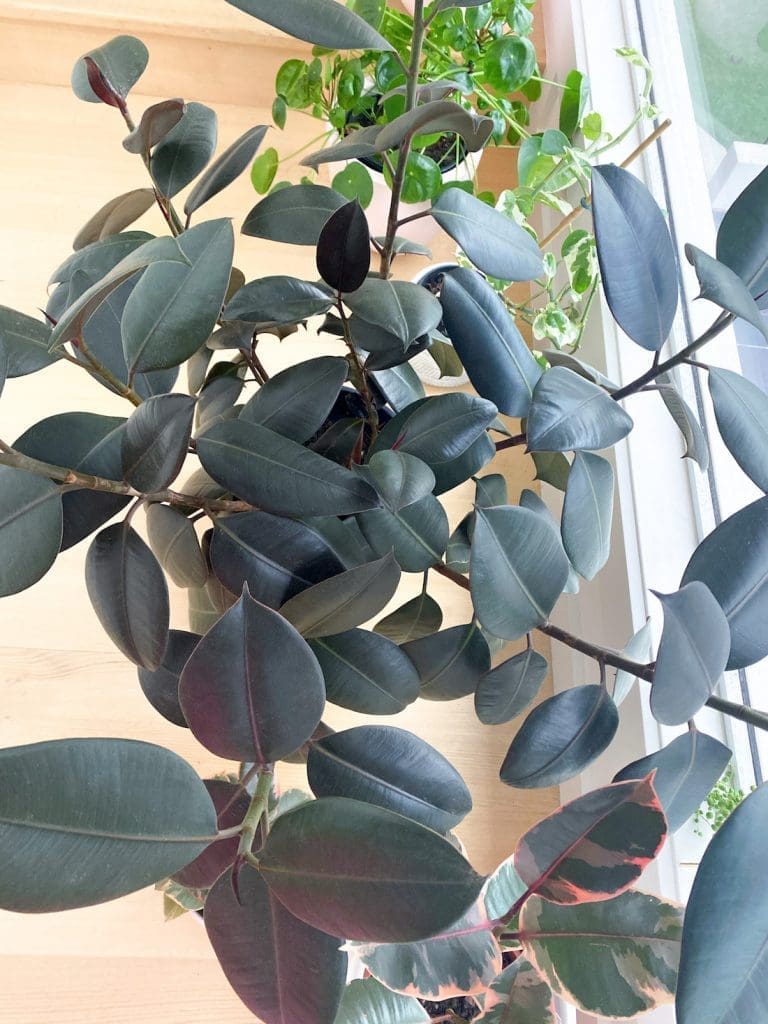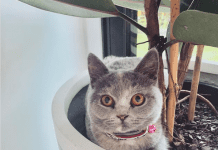The rubber plant is one of this year’s trending indoor plants and overall quite easy to care for — we did after all include it in our list of the top 20 hard to kill indoor plants. But despite its relative low maintenance, some of you have told us it can be killed, ha ha, and would appreciate some advice on how to best care for this plant!
Who better to call on for advice than plant queen Natalie of @the_interior_passion who’s home is literally an indoor jungle. Among her plant tribe are several of the healthiest and happiest rubber plants we’ve ever seen. She shares with us everything you need to know about keeping a rubber plant alive.
Related article: 7 ways to display indoor plants
Related article: Top 20 hard to kill indoor plants

Words by Natalie Tran
Rubber trees, known as ficus elastica, are a great indoor plant which can be grown as medium-sized plants or larger-sized plants up to 7-10m within a few years when the conditions are right. If you want to keep them as smaller plants, you can restrict their growth by keeping them in smaller pots. I love them for their durable foliage so they can sit in high traffic areas of your home.
Here are the main things you need to do to keep rubber plants happy all year round.
Light requirements
Rubber plants like bright light but not direct sunlight. Medium light may be ok but any less light and their leaves will loose shine and lustre — you may also find that the lower leaves fall off or it appears more ‘leggy’ (not full and lush). Rubber plants can survive outside but only undercover.
To help light absorption, keep the leaves dust-free by wiping them with a damp cloth or after you mist them. Remember to also rotate your plant every month or so to ensure even growth — plants grow in the direction of sunlight so the side closest to the window will grow fastest.

Soil requirements
Use a well-draining or well-aerated potting soil mix. A good rule of thumb is to use one third premium indoor soil mix mixed with one third peat and one third perlite. You can also add some bark if you like.
Watering requirements
Before watering, I always test to see if the top 3-5cm layer of soil is dry (with a stick or your index finger). If it’s dry, water away till you see water trickle out of the drainage holes of your pot. I let my rubber plant sit in its tray with water (especially in summer) for about 10 minutes and then pour the remaining water out. It needs to be moist in summer but do not let it sit in water for too long or it could lead to root rot. In winter when the plant is in its dormant phase, it needs less water so every 2-3 weeks is ideal.
If the leaves look droopy, this may be a sign of underwatering but if you see the leaves turn yellow and drop off, this may indicate you are overwatering.
To help combat the dry air in winter from heaters, I also use a humidifier to help the rubber plant thrive in colder months. This is not essential but will help.

Re-potting and fertilising
It is a good idea to fertilise your rubber plant every month but only in the spring to summer — during the cooler months when the plant goes dormant, fertilising can cause more harm than good.
You can use a combination of slow release fertilisers or any good indoor plant liquid fertiliser mixed with water.
Re-potting the rubber plant will also help it grow bigger but like fertilising, only re-pot during the spring and summer months. It is ideal to re-pot it into a new pot which is about 2cms bigger in diameter than its previous home. Remember that re-potting can cause stress on plants so doing it in their growth months will help promote new leaves to grow and for them to be stronger ahead of the colder months.
Rubber plants don’t require much pruning apart from pulling off any browning or dead leaves and if you do cut off any branches to shape it or to propagate, do it in spring or summer. If you have any leaves fall off, you can help promote new leaf growth by cutting a notch in the node from which it fell.
Thank you Natalie for sharing your expert advice on everything you need to know about keeping a rubber plant alive! We’re sure this will help many of us keep our plants thriving… or to revive a few on the brink 😉
More plant care tips
About the author

Working as a Career Management Consultant by day, Natalie is a Queen of Green over on her Instagram account @the_interior_passion. With over 75 plants in her urban jungle, she’s mastered the art of caring for and propagating just about every plant there is. Living by the motto “there’s no such thing as too many plants”, she’s our resident SC plant expert.
This article was first published in August 2020 and continues to be updated.






